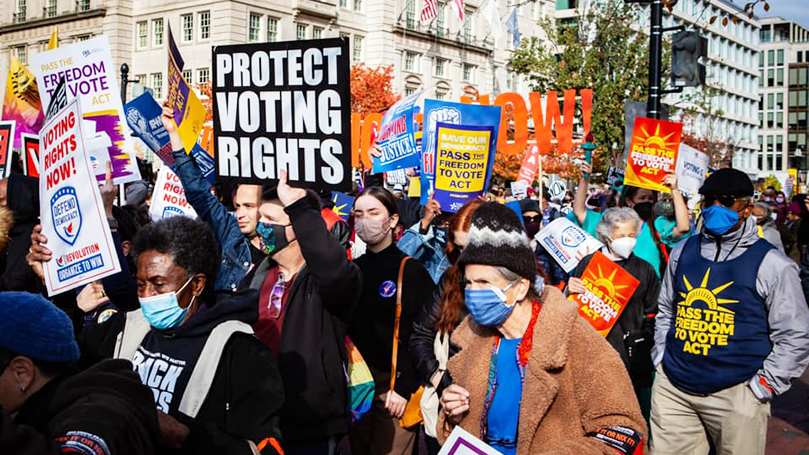
The CPUSA’s strategy at this moment, in this general point in time, is to strengthen the all-people’s front against the extreme right, at least some of which can be called fascist. When we use the terms people, people’s, and all-people’s front — what we used to call popular — we are saying this is a multi-class front. Not just the working class.
So our all-people’s front against the extreme right, against a developing fascist movement, is different from a united front against fascism that other left-wing parties call for. Historically, Marxist-Leninists used the term united front to mean the united working class. (Maoists use the term united front the way Leninists use the term popular front and people’s front. And for this reason, the Inside/Outside Project, because it unites some parties and movements from both traditions, uses the term broad democratic front.) We want a united working class to fight the extreme right, but we want much more than that.
We want the working class to lead the all-people’s front. Does it at present? That is debatable. Either way, if the working class does not lead the front, our task is to make it so. Regardless, the front already exists, and it involves or should involve all strata of the working class as well as other working peoples.
Unionized and nonunionized workers
In 2021, 14 million wage and salary workers belonged to unions, a drop of 241,000 from the prior year. The percent of that number in unions (the “union membership rate”) was 10.3% (Bureau of Labor Statistics). Obviously, nonunionized workers far outnumber unionized ones.
Unemployed
They belong to the working class but are a special element of it. I personally know how easy it is to give up hope while unemployed. For a variety of reasons, white unemployed workers might be especially prone to extreme-right ideology.
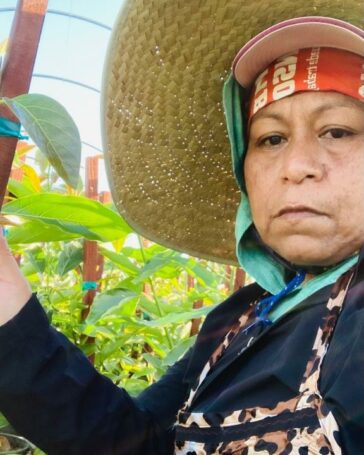 Farmworkers
Farmworkers
These are rural area wage-earning workers, too often neglected because social change movements are concentrated in urban areas. In a typical year, 2.5 million people are wage earners working on farms. About 2 million are employed on crop farms, and about 70% of these workers were born in Mexico (Wilson Center). Thus, the issues of farm workers and immigration rights are tightly interconnected. Farm workers are especially unprotected. Workers employed in agriculture are not eligible for time and a half their regular rates of pay when they work more than 40 hours per week (Department of Labor). (In New York State, the threshold is 60 hours.) So they face especially harsh exploitation.
All-class social movements
Examples are the African American equality movement, struggles for Latino/Hispanic equality, the women’s equality organizations, LGBTQ struggles, the youth and student movements, and immigrant rights organizations. Every one of these social movements involves the working class and other classes. These movements are the greatest allies of the working class, and some hold positions more advanced than the programs of some unions. Included are organizations fighting on many fronts as well as single-issue groups.
Farmers and ranchers
In 2017, there were slightly more than 2 million farms and ranches. However, around 85,000 large farms owning 2,000 or more acres comprised nearly 60% of all farmland. There were only around 275,000 small farms owning 1 to 10 acres, and that represented just one-tenth of 1% of all farmland (CNBC).
Small business owners
The U.S. Small Business Administration’s Office of Advocacy defines a small business as one employing fewer than 500 employees. There are nearly 32 million of them, but 81% (25.7 million) have no employees.
Given the level of development of socialist and progressive forces and the balance of forces, the all-people’s front also includes some elements of the capitalist class. After all, in this current period, we are attempting to stop the development of fascism; we are not launching an anti-monopoly coalition or attempting to overthrow capitalism. This does not mean that all the people’s victories are only defensive. It does mean that we are by no means in a general anti-capitalist phase.
The strike waves of the last two years; the unprecedented Black Lives Matter demonstrations; progressive electoral victories here and there, especially in the Deep South and other deep red regions: these and other victories are part of the all-people’s front. From my vantage point, the danger is to misinterpret these actions as evidence that something more advanced has superseded the all-people’s front.
When writing about the 1905 Democratic Revolution and the Russian Social-Democratic Labor Party (which became the Communist Party of that country), Lenin wrote, “a Social-Democratic Party which operates in a bourgeois society cannot take part in politics without marching, in certain cases, side by side with bourgeois democracy” (Two Tactics). When he wrote that, Russia had revolutionary and republican capitalists on one side, and liberal and monarchist capitalists on the other. His Bolshevik wing of the Russian party sometimes marched in parallel with the first group but did not merge into it.
This necessity of sometimes working alongside some elements of the capitalist class but not becoming engulfed by it stands true even in countries with a long democratic history (however limited that democracy has been). This is especially so right now in the U.S. because of our currently very limited trade union movement and our small organized left.
We must be part of the movements to remedy our society’s wrongs.
The two-party system is an additional force throwing the organized left into the world of capitalist politics. Neither the Democrats nor the Republicans have ever challenged capitalist rule in America, though the Democrats have a progressive and socialist wing and the Republicans have become dangerously reactionary. Socialist parties that stand aloof have much more limited contact and influence with mass movements in our country. If we feel the pain of workers and oppressed people, then we must conclude that it is a position of privilege to merely stand on the sidelines and only bark about what is wrong. Workers and especially oppressed people deserve solutions, and we must be part of the movements to remedy our society’s wrongs. Right now, not in the distant future.
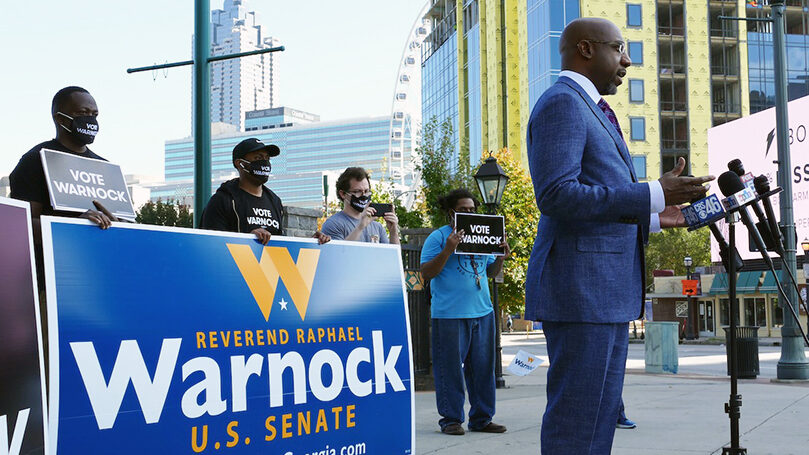
Yes, the various elements of the front unite based on common issues. However, in our political system, this will always boil down to this or that candidate, since practically every election involves a single-member district. Which given candidate in a given electoral district supports most of the issues that progressives favor?
One cannot be a dialectical and historical materialist and ignore the two-party reality of today. Then there’s the anti-democratic nature of the Senate, in which the Democratic Party represents 41.5 million more people than the Republican Party, yet holds the same number of seats. Add to this the filibuster, and we have a situation in which the country is ruled by a minority that routinely blocks popular legislation. Democratic Party Senators Joe Manchin (W. Va.) and Kyrsten Sinema (Ariz.) were able to sabotage President Biden’s plans for two reasons: 1) The Democrats “control” the Senate only via Vice President Kamala Harris’s tiebreaker role, and 2) the Republican Party, including the Never Trumpers, has been the Party of No since President Obama.
Wishing we had a massive left-wing party in a parliamentary system, or something even better, is an idealist waste of time. We must look at where reality is today and strategize on how to make it much better. Some democratic reforms could make critical differences. Included on this list would be expanding voting rights, creating independent redistricting commissions, eliminating the Electoral College, and reversing Citizens United — some of those demands are herculean and will require Democratic supermajorities in the Capitol and many state capitals. Standing to the side and lecturing people in struggle about how terrible the situation is, but refusing to help elect candidates who pledge to make better laws, does not begin to do enough.
It also ignores what the Party program correctly points out: “The Democratic Party has been the main vehicle used by African American and Latino communities to gain representation, as well as the main mechanism used to elect labor, progressive, and even left activists to public office, especially at the local level.” African American, Latino, Native American, and Asian people have more reason than any social group to give up. Yet their leaders and organizations have not done so and are still fighting like mad. How dare any left political party or movement tell them they are wrong.
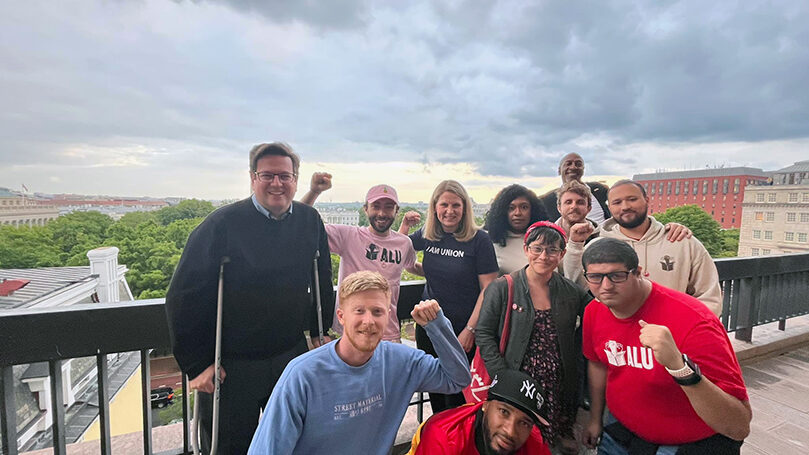
Unions have not had the support of the federal government for several generations. And most states have been hostile, not supportive. Yet unions and their leaderships have also not given up. When I hear left-wing nonprofit organizations and leaders tell trade unionists that they are wasting their time by supporting less-than-socialist candidates in the Democratic Party, I get a visceral reaction, an instinctive repulsion.
Indeed, the all-class nature of the all-people’s front is especially evident in our electoral system. When most or all campaigns are non-ending, with essentially unlimited spending, many elections must involve at least some capitalist funding, especially on the level of governor, other state-wide offices, the U.S. Senate, and increasingly so members of the U.S. House. And without debate, capitalists are highly involved in our presidential elections.
The few socialist legislators serving in Washington, D.C., and Albany, NY, who refuse all capitalist contributions are the exception — some capitalist funding goes to nearly every progressive legislator.
Communist candidates cannot accept money from billionaires and monopolies. But we can’t impose our position on every progressive and left-of-center liberal candidate. If we do, we will end up with only a few candidates to support. The task of halting the extreme right requires a much broader electoral front. How does our Party march side by side with anti–extreme-right elected officials from a capitalist party? Primarily through the mass movements, nearly all of which are involved in every election we have.
Our tactics must jibe with our strategy. What exactly do we mean by “tactics”? Lenin answered, “By the Party’s tactics we mean the Party’s political conduct, or the character, direction, and methods of its political activity” (Two Tactics). At the least, we must not be sectarian. Instead, we should be broad in our approach. We should not hammer on the shortcomings of elements of the all-people’s front. Many forces of the front do that already; there is no need for us to pile on. Communists, more than any other political force, must work to build up the coalitions involved.
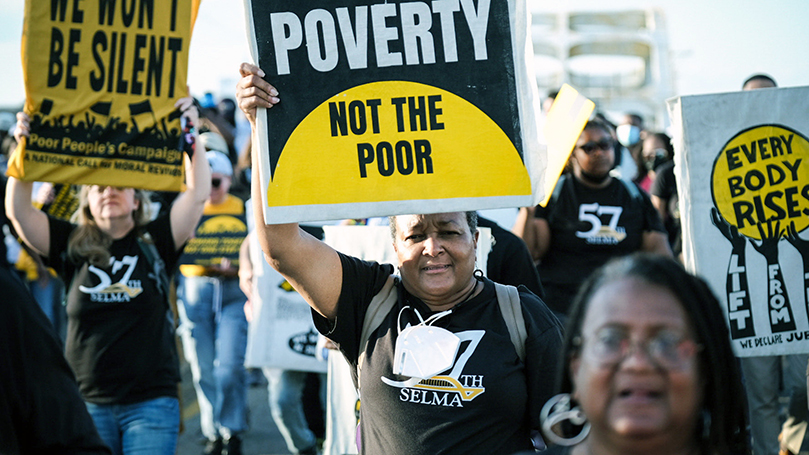
This is true especially after primary elections are over and voters face the choice of a decent liberal candidate or an extreme rightist. Harsh criticism of a Democratic candidate, who will either defeat or lose to an extreme-right Republican, serves no positive purpose. Some on the left think they must cleanse their brains and souls by telling the masses how flawed the better candidate is. In an age of rampant misinformation, which hits people from many sides, this is an especially poor tactic. Nearly half of the population gets its news sometimes or often from social media (most likely Facebook) (Pew Research). Watch segments from the three cable “news” networks — Fox, Newsmax, and One America News. See which stories they pound on and which they ignore, and you will learn why some voters have no idea of where progressives truly stand. In such a world of misinformation, we must keep things straightforward when talking to voters.
Avoiding harsh criticism of Democrats in general election time periods is particularly difficult for parties and movements that back social democratic/democratic socialist candidates and the most progressive of the rest. These candidates are winning primaries nearly exclusively in the darkest blue districts. So during their campaigns, there are contrasts only with other Democrats and not the extreme-right Republicans. Sometimes, there seems to be an inability to turn off such criticism after primary season has ended. On a federal level are the examples of Bernie Sanders’s voters who couldn’t bring themselves to vote for Hillary Clinton in 2016 or Joe Biden in 2020.
That objective situation produces an ironic outcome: corporate Democrats take all the heat, and Republicans, regardless of party faction, are rarely mentioned. I am on email lists of several social change organizations working to elect democratic socialist and progressive legislators. I have yet to see a critique of Republicans from two of them. I am guessing these two organizations are in large company with other social change movements.
Leftists who tell people to not bother voting, that voting is a waste of time, are committing terrible errors. The extreme right is expending vast amounts of time, energy, and money trying to limit voting rights, to minimize or eliminate democracy. That alone should tell progressives and leftists to fight like hell to expand the electorate, to never counsel people to not vote. Electoral struggle is a necessary path of struggle.
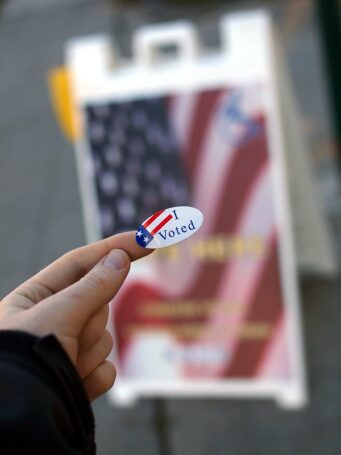 We must avoid getting a contact high by surrounding ourselves with only like-minded activists. Instead, I prescribe sobriety tests by working with the people. Some of the general mass of voters are deeply confused by primary elections. I know this because when I do mass work for general elections, I sometimes hear, “But I already voted this year.” And the statements are not coming from early voters. We must accept the reality that many voters do not understand the basic civics of the primary versus the general.
We must avoid getting a contact high by surrounding ourselves with only like-minded activists. Instead, I prescribe sobriety tests by working with the people. Some of the general mass of voters are deeply confused by primary elections. I know this because when I do mass work for general elections, I sometimes hear, “But I already voted this year.” And the statements are not coming from early voters. We must accept the reality that many voters do not understand the basic civics of the primary versus the general.
In my mass work for the Working Families Party, when attempting to gather signatures to place candidates on the WFP line, some WFP-registered voters tell me they are registered with the Democrats and not the WFP. They are wrong, and I know it, because my information is from the Board of Elections. Meaning, these people have never voted in a primary. Otherwise, they would have learned at their polling sites that they were not eligible to vote in the Democratic Party primary since they were registered with the WFP. This is not, by any means, to pick on the WFP. I think the mass movements especially need to clarify this to Democratic Party voters, elements of which constitute the major pillars of the future anti-monopoly coalition.
This is the reality of where things stand. Lenin told us that scientific thinking “demands that account should be taken of all the forces, groups, parties, classes and masses operating” in a country. He added that “policy should not be determined by mere desires and views, and by the degree of class consciousness and readiness” of the most advanced group or party (“Left-Wing” Communism: An Infantile Disorder). We must heed his advice. The all-people’s front against the extreme right is the strategy to bring us forward.
The opinions of the author do not necessarily reflect the positions of the CPUSA.
Images: Top, Indivisible (Facebook); Farmworker, United Farm Workers (Facebook); Rev. Raphael Warnock campaigning for Senate (Facebook); Amazon Labor Union activists, ALU (Facebook); Poor People’s Campaign march, PPC (Facebook); “I voted,” Daniel Parks (CC BY-NC 2.0).


 Join Now
Join Now